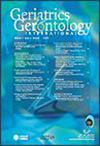Regional disparities in home health care utilization for older adults and their associated factors at the secondary medical area level: A Nationwide study in Japan
Abstract
Aim
As aging populations shift health care from hospitals to communities, Japan has implemented policies to promote home health care. This study explored regional differences in home health care recipients among older adults and related factors.
Methods
We used nationwide data from 2020 to describe the proportion of older adults receiving regular home visits and the medical institutions utilized across secondary medical areas: urban, middle and depopulated areas. We examined factors associated with the proportion of patients receiving regular home visits. Exposures included each secondary medical area's medical and long-term-care (LTC) resources, adjusted for the older adult population; proportion of single-person households; and regional factors. We performed a multivariate negative binomial distribution analysis.
Results
A total of 333 secondary medical areas were included. Urban areas had more patients receiving regular home visits, primarily from enhanced home care support clinics/hospitals (HCSCs). Fewer patients received regular home visits in depopulated areas, and conventional HCSCs were more common. Multivariate analysis revealed that the number of conventional HCSCs (coefficient, 0.17 [95% confidence intervals (CI), 0.08 to 0.26]), enhanced HCSCs (coefficient, 0.21 [95% CI, 0.14 to 0.29]) and population density (coefficient, 0.10 [95% CI, 0.02 to 0.19]) were positively associated with higher home-visit rates. Beds in LTC welfare facilities (coefficient, −0.10 [95% CI, −0.19 to −0.01]) and beds in LTC health facilities (coefficient, −0.09 [95% CI, −0.17 to 0.00]) were negatively associated.
Conclusions
Policies to promote home health care have led to high home-visit rates in urban areas. Medical and LTC resources and regional factors influence disparities. As Japan's population ages, it is crucial to recognize these disparities and develop medical and LTC systems tailored to each region's characteristics. Geriatr Gerontol Int 2024; 24: 1350–1361.


 求助内容:
求助内容: 应助结果提醒方式:
应助结果提醒方式:


